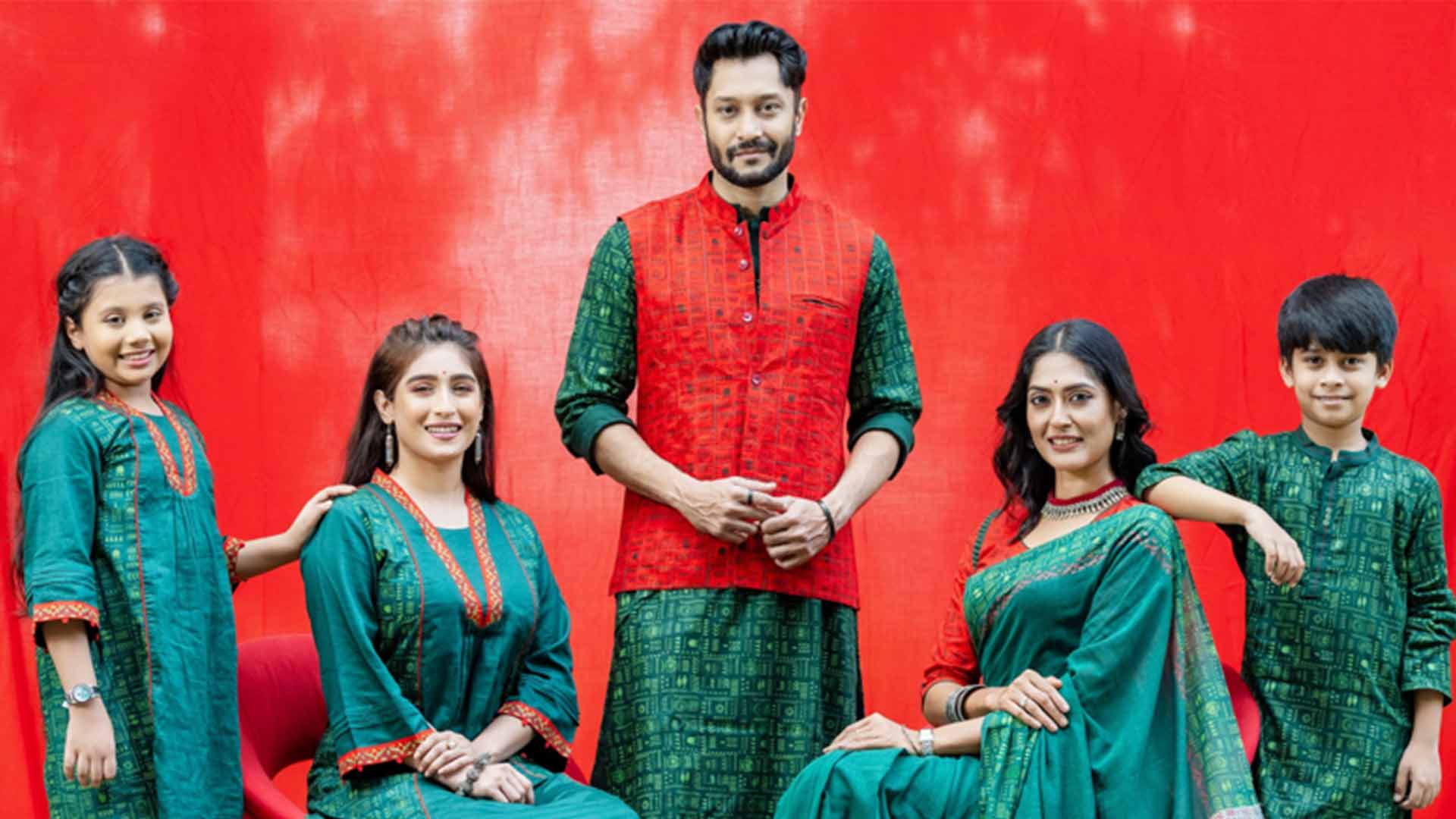We are conscious of the presence of red and green in our surroundings. Only a few countries have a powerful affinity for colours. It is only natural for Bengalis to feel a sense of excitement or interest when a date or event holds significant meaning to them. We have the image of Bangladesh, with its red and green colours, in our consciousness. Similarly, this colour becomes deeply embedded in our daily lives as a nation whenever we commemorate a holiday or any other important event.
The influence of Swadeshi thinking has been evident in Bangladesh’s fashion industry for several years. During events such as Pahela Baishakh, Victory Day, and International Mother Language Day, people can observe the increasing popularity of this idea. Fashion houses host a variety of events on these special days
During the early 2000s, the country started contemplating the practical implementation of fashion for special occasions. Journalist Sheikh Saifur Rahman embarked on his journey with that idea. In 2000, he independently conceived the idea of incorporating special days into the fashion world while pursuing his journalism career. To commemorate International Mother Language Day, she collaborated with fashion designers to create a stunning dress. They showcased the dress in the media through a captivating photoshoot. His work is highly regarded in Indian households. Since then, prominent fashion houses in Bangladesh have begun operating. However, this issue has gained popularity among the younger generation and the general public since 2006. Today’s houses easily demonstrate the popularity of this new fashion style.
During the year, we observe various fashion trends, but in this victorious month, we can witness a shared sense of patriotism, warmth, and triumph among people from all walks of life. In anticipation of Victory Day, fashion houses have designed a collection of dresses inspired by the winter season. Desi loom, khaddar, or thick cotton cloth are typically more noticeable. The children’s clothing collection includes various traditional garments such as saris, Punjabi, fatwa, and salwar kameez, as well as modern items like t-shirts, shawls, mugs, and caps. These items are available in vibrant Victory colours and feature text related to Bangladesh. Various types of craftsmanship adorn the dress, including handwork, embroidery, screen printing, block printing, rigging, and more. Furthermore, the dress incorporates various elements of native culture as accessories.
Arang, Anjans, Rang, K-Craft, Nagardola, Banglar Mela, Nitya Gift, Anyamela, Nipun, Bibiana, Sada-Kalo, OT, Taramarka, OG, Infinity, and various other fashion houses have showcased their red-green designs in this special event celebrating Victory Day.
However, the prevalence of a business-oriented mindset in fashion houses often results in decreased creativity regarding quality and design. In this case, our house and designers should receive more attention. Fashion houses have the potential to play a significant role in effectively conveying the concepts of native culture and nationalism to the younger generation. To preserve this culture, houses need to be more mindful and genuine.

